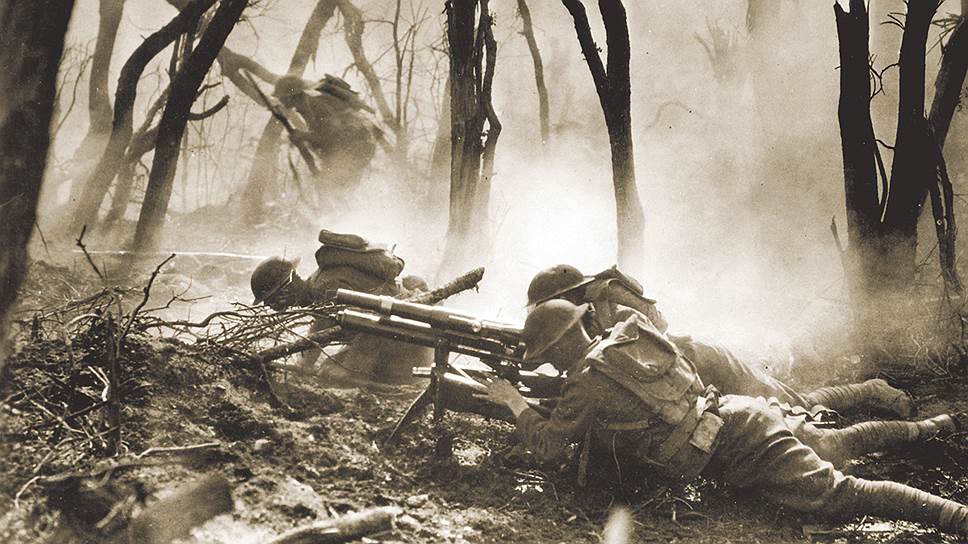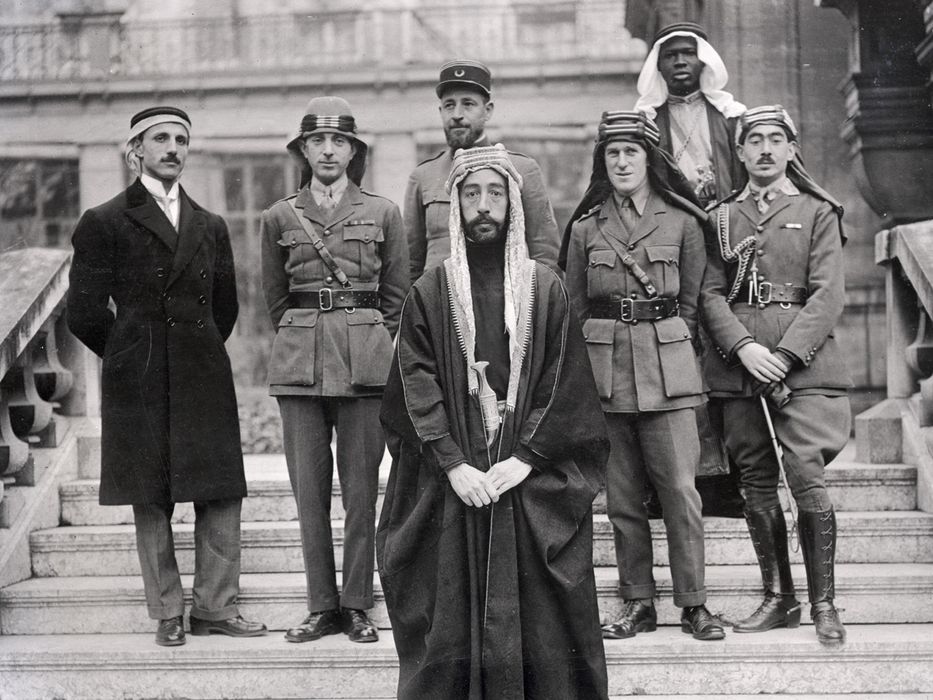Fighting Again in Russia; Calls for Statehood in Central Europe.
New Challenges in the Middle East.
Special to The Great War Project.
(4 June) The mutual discord between the Allied leaders and the American commanding general, John J. Pershing, often reaches a level of frank dislike, but it is not confined to the American commander alone.
So notes one British officer assigned as liaison for the Allied command.
“While I was having tea with Lloyd George, the [British prime minister],” writes the liaison officer, “the PM astonished me by starting in to tell me what a foul commander they had in the field, Sir Douglas Haig. It is unbelievable.”
“He lost 700,000 men last summer unnecessarily,” Lloyd George continued. “I want to remove him, but I cannot find anybody to replace him.”
“Then the PM started in on how badly General Pershing was behaving.”

Fighting probably near Monsec, spring 1918.
This is a moment of terrible distrust and indecision for all the Allies. And it is a moment that needed anything but mistrust if France, Britain, and now the United States are going to win the war.
Indeed, amidst all this fruitless squabbling, “the American Expeditionary Forces, or AEF, were now growing rapidly. Between April and July 1918,” writes historian Gary Mead….
“about one million American soldiers stepped off the boat in France.”
“The German offensives were initially very successful that spring,” writes Mead, “in quantity of munitions, tanks, aircraft and artillery.” The Americans are now making up much of that considerable superiority.”
One place in northern France that the Allies hold is the village of Montsec. It is thought to be the most impregnable position in all of France, and at this point, the Americans hold it. The two sides fight night after night there, but little changes.

Monument to the Montsec battle, spring 1918.
One night that spring a century ago, the Germans attack the Americans there. The fighting is savage. The Germans seize the heights that night but then withdraw the next morning.
“The doughboys had the humiliating experience,” writes historian Mead, “of being allowed to reoccupy what they were expected never to lose in the first place.”
Mead continues, “The Germans made the most of this early success against the Americans, going so far as to deliver lengthy reports with pictures of the affair to neutral countries. Berlin radio even broadcast an account of how the Americans had been resoundingly thumped.”
“Something would have to be done,” writes Mead, “to recover what was for Pershing a dreadful loss of face.”
The mood in the Allied camp is terribly gloomy.
“More than ever,” writes historian Mead, “The Americans needed to prove themselves.”
Meanwhile, although most of the war news is dominated by France and the Western Front, there is still a war in the east.
Fighting is spreading in Russia once again, reports historian Martin Gilbert. And Gilbert adds, “the political and military wars were marching side by side.”

Lawrence, center, at Aqaba.
Important developments occur in Eastern Europe and the Middle East.
One June 3rd the Allies announce their full support for Polish, Czech, and Yugoslav statehood. The next day, under pressure from Britain, and especially from T.E. Lawrence, the Zionist leader Chaim Weizmann meets with Emir Feisal, the leader of the Arab Revolt at Aqaba.

Faisal, center, and T.E. Lawrence, second from right
And at that moment in towns all over Ukraine, “thousands of Jews are being murdered,” Gilbert reports, “by anti-Bolshevik forces whose historic anti-Semitism combined with a new hatred of pro-Bolshevik Jews now in control of the Russian government.”
